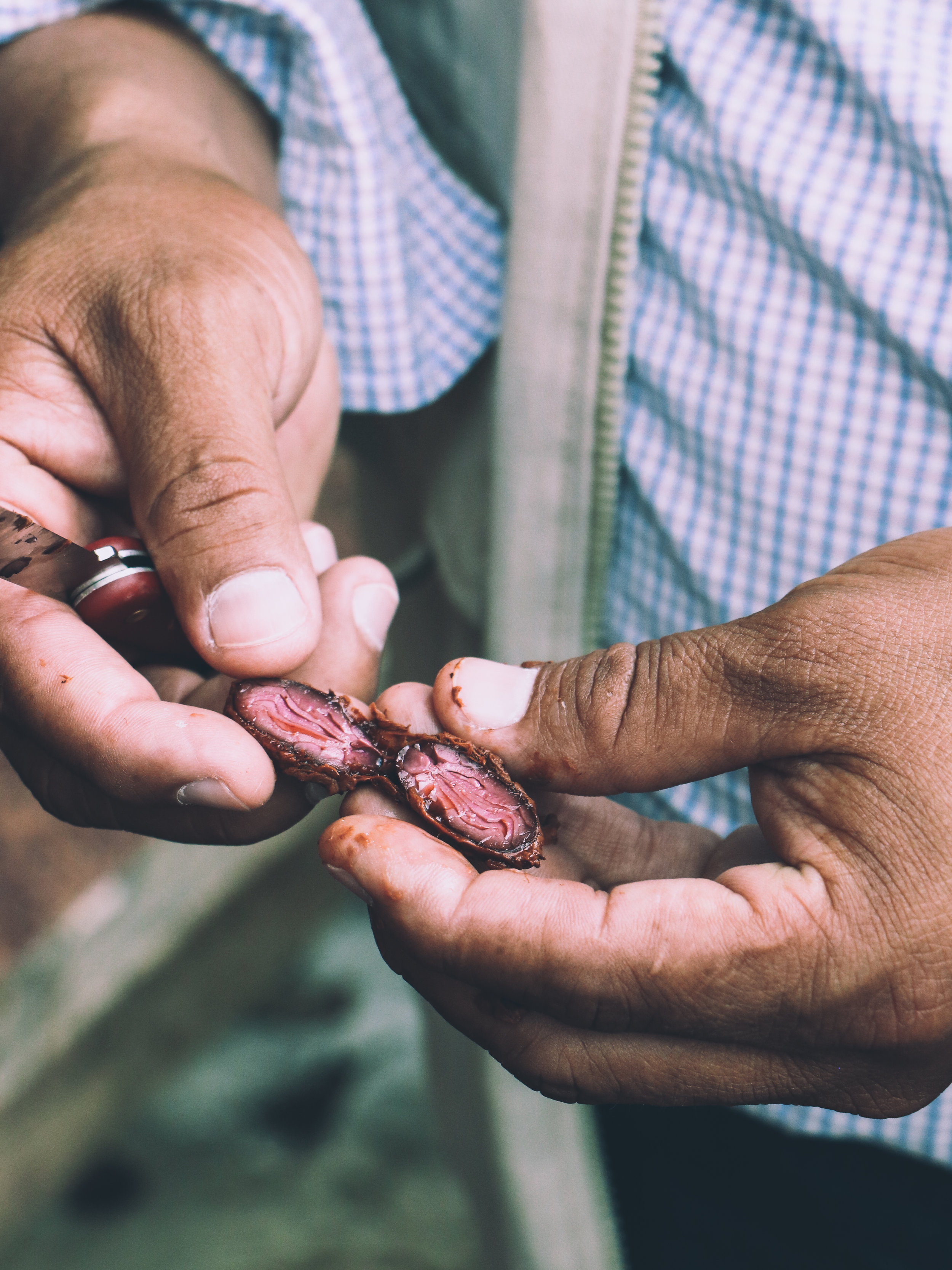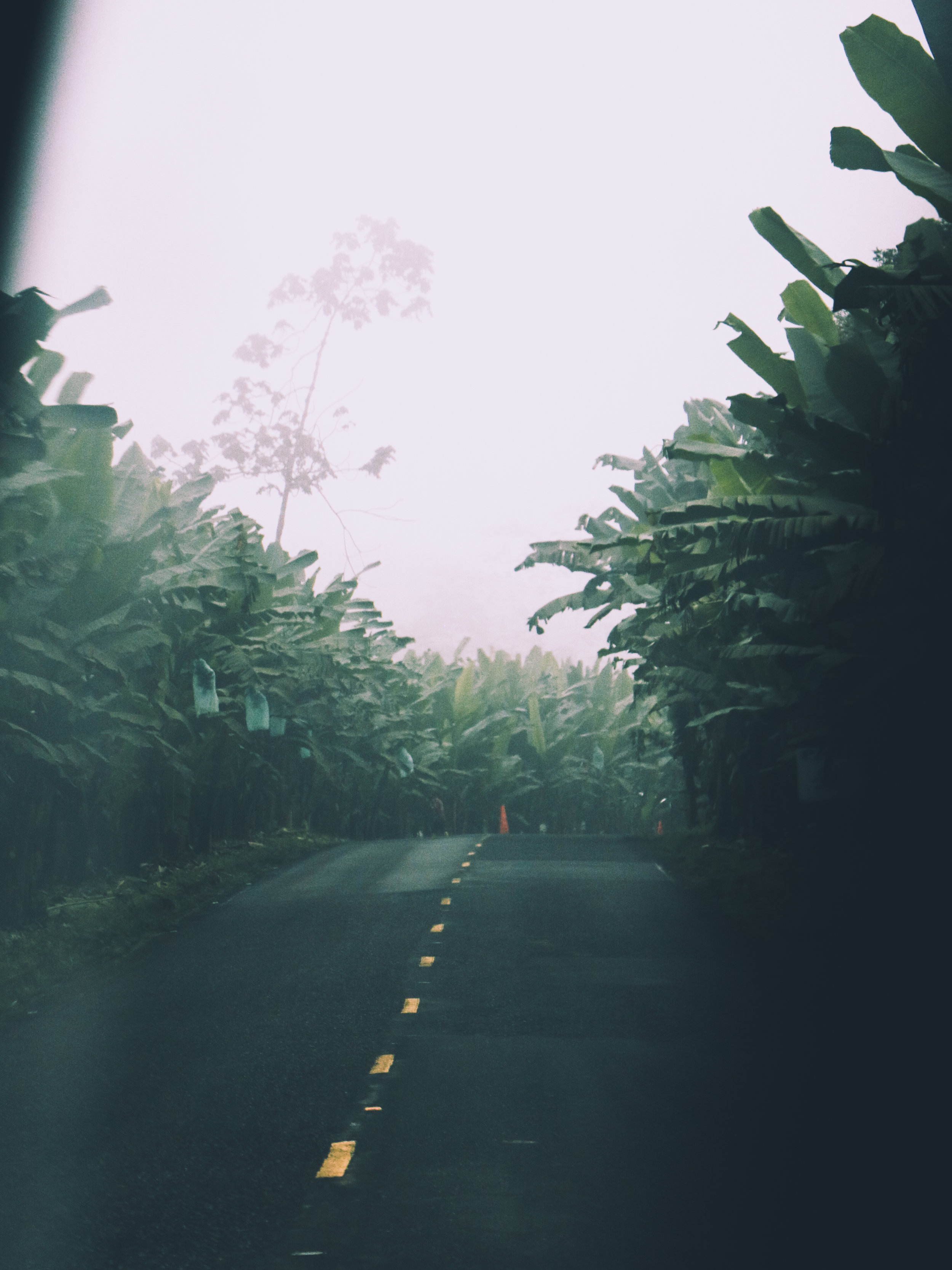November 2018
cOOP.ch
FACTs not words
sponsored by COOP Switzerland
BRANDED SHORT DOCUMENTARY
6 episodes
Videomaker (director, camera operator and DoP, editor)
Armed with great expectations and curiosity for a new country and culture, the 11th of November I left with the other 4 coop scouts towards Ecuador to discover cocoa cultivations.
A smiling culture
Soon after we arrived in Quito, we decided to go to a local restaurant to get a taste of the typical food. We tried various dishes and fresh fruits, which was all very delicious.
It’s a very lively monday morning in the capital city, a protest is taking place in front of the Quito city hall and other locals are showing off their handcrafted treasures looking to sell them, all together with a big smile on their faces.
We head towards the “Republica del cacao” museum, where, through a planned visit, we start to learn the way cocoa is handled in production through the tasting of over 10 different kinds of cocoa.
In the afternoon we get to look at the city from a new perspective, which is up above from the “Madonna de Quito”, to then end our day with a trip towards the north and the “Mitad del Mudo”, location in which the french colony settled on the equator line placement.
The third day already starts with a new trip, this time on a plane towards Guayaquil, which gets us a step closer to the cocoa plantations. Once landed we head to the city center and explore its colourful streets, heading up “Cerro Santa Ana” till the lighthouse (faro inteso quelli del mare? Senno usa street light). Shortly after we head back to our hotel in order to meet Freddy Cabello, none other than the CEO of UNOCACE. an organisation made up of 825 producers working on 3’468 hectares of cocoa with a biological and fairtrade certification on the Ecuadorian territory.
Agroforestry as an ecologically supportive method of cultivating
The next day begins in Milafro, the main center for cocoa harvesting of UNOCACE. Here we start discovering the procedures for checking the cocoa beans, which is meticulously done with various samples. We follow Walter Yana, bolivian farmer and instructor, who explains to us how agroforestry works, particularly when applied to the cultivations os cocoa.
This cultivation system uses different plantations in order to create a biodiverse ecosystem, great for cultivating cocoa and harmless towards the environment and fauna surrounding it.
This 360° plunge takes us inside the incredible forests filled with fruit plants, banana plants (crucial for the natural irrigation of the plantations), big Yuca and Achiote plants (regularly trimmed to create biomass and organic matter for the fertilisation of the land) and finally, protected from the big shrubs, the cocoa plants.
We open a fresh cocoa pod, inside of which we find the white beans, similar to litchi, both in taste and feel. They have an acidic side to them, but in a very delicate way, completely different to the one of the macerated and dried beans used to produce chocolate.
The following day we follow Valentino Aguayo Ivarra, president of the Mocache “La Cruz” association, one of the twelve who send their cocoa to UNOCACE.
In the cocoa plantations, Valentino tells us that, at the beginning, when the agroforestry system was proposed to him, he was very sceptic, without therefore respecting all the rules for his farm. He although quickly realised that in the plantations with different kind of plants, cocoa grows way better. His fear was to have too many plants in the same place, causing a form of suffocation between them, and therefore taking away space for the cocoa plants. In reality although, you can tell that a cocoa plant cultivated with an agroforestry system, is far more capable of handling the drought periods, precisely because it creates its own ecosystem from within.
In the field we get shown a demonstration from the UNOCACE instructors, where, the two types of local cultivating techniques are confronted with each other: the traditional monocultivation and the agroforestry. On two different land samples some water is poured, in order to simulate the rain, to see how the terrain would react. The result is mind-blowing: on the first sample of burned terrain (monocultivation) the water slides and isn’t able to fully seep into the ground, whilst with the second sample, filled with dried leaves, branches and a fertile soil, the water penetrates in a matter of seconds.
The filthy water made out of soil and organic matter, burnt during the process of preparation, slide through the promontories to then end up in the rivers. This causes the rivers to fill with dirty water and to enlarge considerably , which makes the evaporation of water trickier and not as good. With the agroforestry process instead, the water by penetrating the terrain remains in the same location it fell onto, which allows the evaporation cycle to work like it’s supposed to.
Agroforestry in practice
The alarm goes off at the very beginning of dawn as we are to leave for a new destination. A cultivation in the middle of the amazon forest, a few kilometres away from the city of Caluma. The plantation we are to visit has only been born for a few years, but has already reached great results. We are welcomed by a huge table full of fresh fruits of all shapes and colours, massive papayas just picked, tangerines and mangos.
The instructor and head of plantation Margot Borja, takes us in her steep field, showing us how the pruning and process of biomass production work.
Our trip is coming to an end, and during the evening we go back up north. We stop for a night in Baños to then arrive, the day after, in Quito, where the journey back home officially starts. A travel through different cultures, smiling faces, habits and incredible scents, that taught me new and unexpected things. Seeing the real deforestation problem with your own eyes makes the battle for a more conscious ecosystem even more important and real, as it is crucial to maintain the planet and the environment surrounding us safe.


